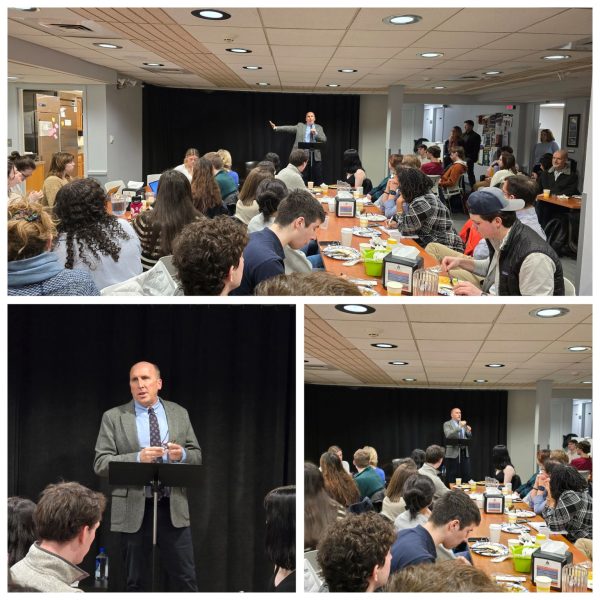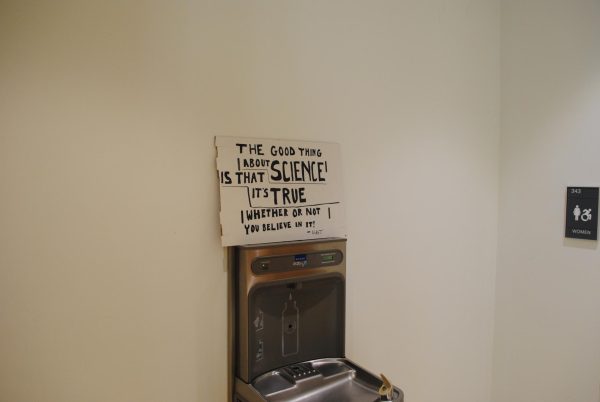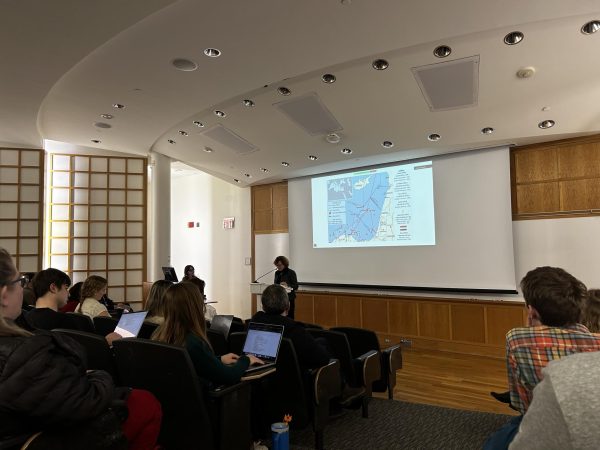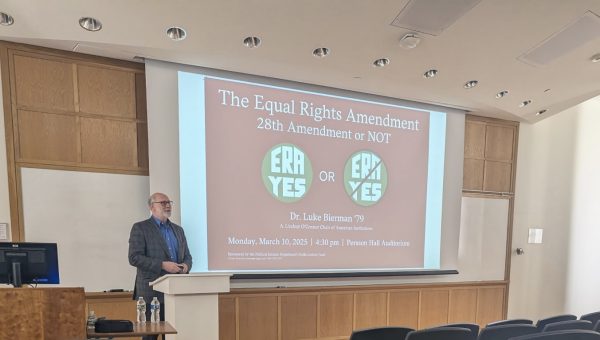Artist Adam Frelin Proposes Lighthouse Installation Above Little Hall
On Wednesday, Nov. 16, artist Adam Frelin spoke to the Colgate University community about his past and future works, including a proposed installation on top of Little Hall titled Beacon, turning the academic building into a lighthouse illuminating Taylor Lake.
“Having a lighthouse at a college or university carries particular resonance,” Frelin said in his proposal. “As a beacon, it symbolizes the act of searching for meaning and purpose, allowing oneself to wander astray and helping us eventually find our way back home.”
Junior Sarah Fatzinger, who attended the lecture, noted that Beacon may connect with many students’ experiences at college.
“It can be so easy to get lost amongst the chaos as you try to find yourself while transitioning into this new world of expectations and opportunity. In this way, the symbolism of this temporary lighthouse above Little Hall really spoke to me,” Fatzinger said. “I think the location is particularly interesting, as Little Hall serves as kind of the halfway point between upper and lower campus, as so much development happens between these years between being underclassmen versus upperclassmen.”
Junior Kayla Gutheil questioned some of the implications of the installation.
“The idea is pretty cool, but logistically, I feel like it seems a bit impractical,” Gutheil said. “Walking towards Little Hall, for example, wouldn’t it feel like you are getting blinded? I think the idea would be way cooler on top of the [Colgate Memorial Chapel] because it is already such a symbol for Colgate and the lighthouse could add to that statement.”
As of Dec. 2022, the installation plans are still in the early stages of development before being approved by the University.
Frelin specializes in public art and has received many prestigious art awards and coveted spots in galleries and museums.
“While the sites I work in vary widely, my aim is to make art that compliments a place while also attempting to expand the meaning,” Frelin said.
Although Frelin has worked in many places with different mediums, he is drawn to public spaces.
“My choice to make artwork for outdoor locations and public places comes from a belief that art should be part of our shared world,” Frelin said.
Frelin started off the seminar by talking about how art can become an important icon, with examples of the Statue of Liberty in New York City and Cloud Gate (“The Bean”) in Chicago. He then discussed some of his past projects, including his notable 2016 Breathing Lights project. Frelin worked on a team that received a grant to draw attention to a civic concern in the upstate New York cities of Schenectady, Albany, and Troy.
The civic concern Frelin decided to focus on was the 5,000 abandoned buildings in the area. The team installed lights that simulated a breathing effect inside about 200 buildings. To see all the buildings takes around seven hours of driving and introduced more people to neighborhoods often avoided.
“A light effect that can go into these buildings is what we came up with. It should change in some way and should change in some way that is bodily,” Frelin said. “This was a massive two-year project where we had over 100 events that went along with the installation itself that drew attention to these neighborhoods and issues of disinvestment, vacancy, and history.”
The project received considerable press coverage, including an hour-long PBS documentary. Fatzinger was impressed with Breathing Lights in particular.
“I found the art installation with the abandoned houses to be very interesting. The meaning behind this project carried a lot of weight, and I really appreciated the work they were trying to do and the message they were trying to send with it. I would have loved to have been able to see it in person,” Fatzinger said.
Frelin appeared hopeful in his presentation of Beacon, believing in the importance of art in college campus settings. During a question session, he also responded to the opinions of professors and students, allowing for their input into the project’s specific details amid its development.
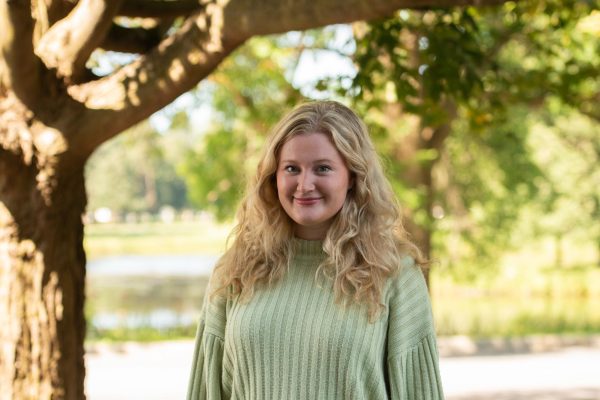
Payton Gore is a senior from Baltimore, MD concentrating in marine freshwater science with a minor in sociology. She has previously served as a staff writer...


